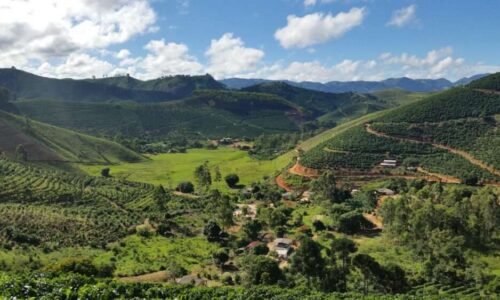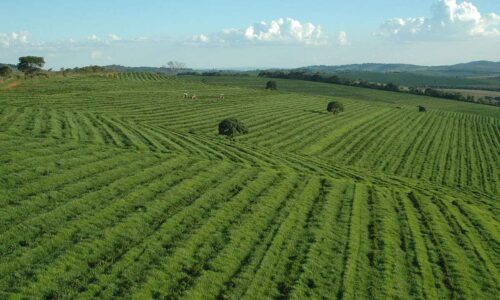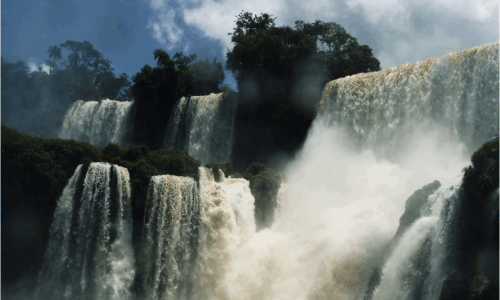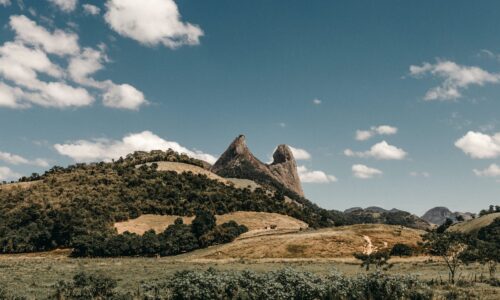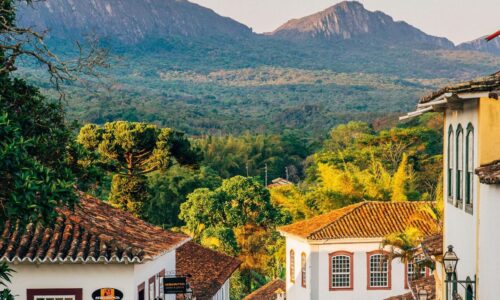Coffee Growing Regions
Explore the coffee growing regions from which our specialty coffee is sourced. Read stories behind our specialty coffee, including its rich history, unique landscape, and natural environment.
These posts showcase the distinct flavors and aromas that arise from the coffee and the specific geographic characteristics of the region where it's cultivated. Moreover, learn about the farmers that meticulously care for the coffee plants. We also explore their sustainable farming practices to conserve and preserve the land's biodiversity. By understanding the origins and context of our coffee, you'll develop a deeper appreciation for the craftsmanship that goes into every cup.
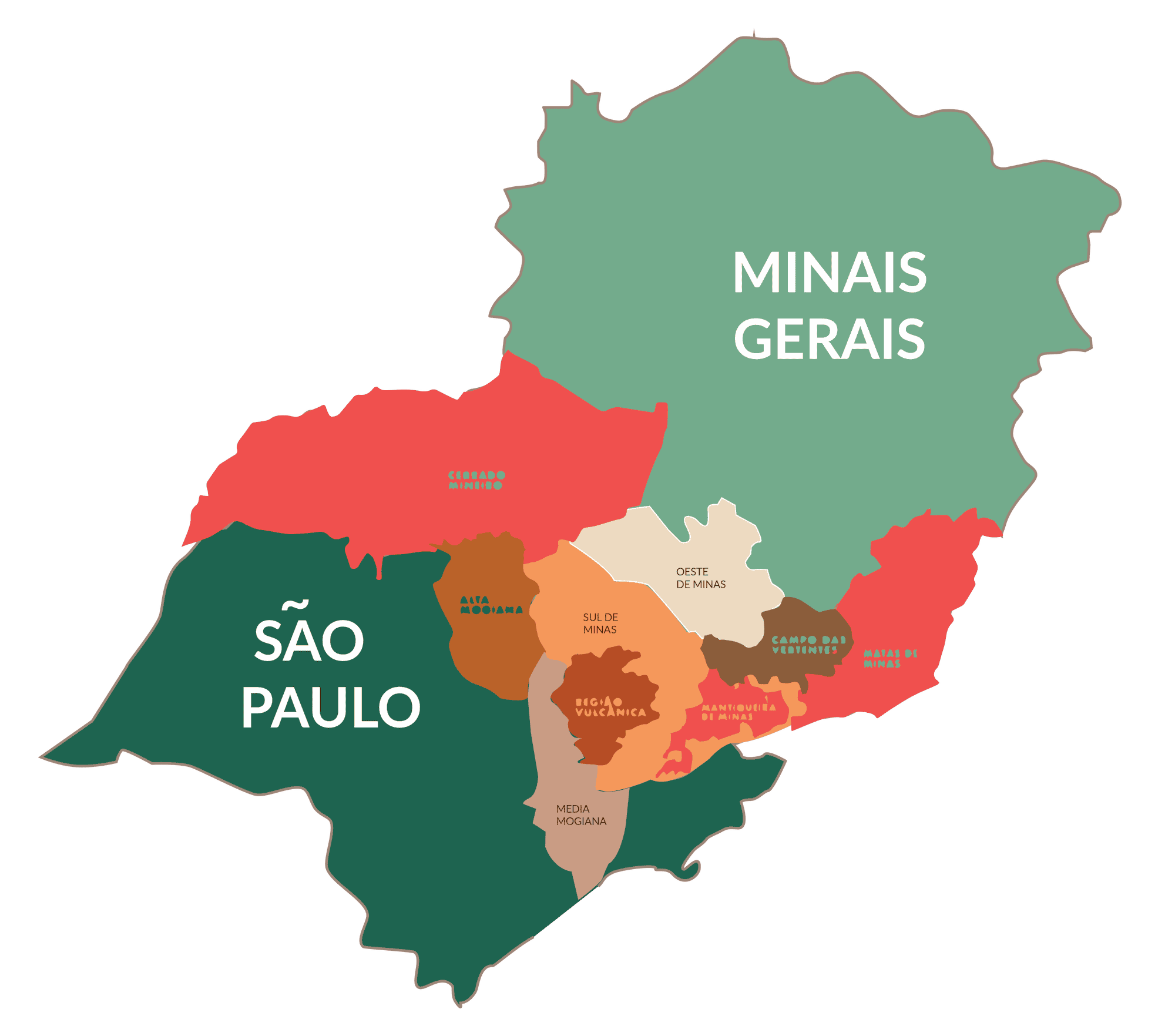
CERRADO MINEIRO - This area was the first recipient of the Denomination of Origin in Brazil, underscoring its significance in the realm of coffee production. The Cerrado's coffee growers, particularly those who prioritized quality, blazed a trail in the production of specialty coffees. Their commitment to traceability has yielded outstanding results in the cup. The region's climatic features contribute to a harvest season distinguished by dry weather, providing an ideal environment for various processing methods. Encompassing 55 municipalities in the Triângulo Mineiro, Alto Paranaíba, and Northwest Minas, this region remains a cornerstone of Brazil's coffee industry.
ALTA MOGIANA PAULISTA - Encompassing 15 cities within the state of São Paulo, Alta Mogiana takes center stage in the realm of traditional coffee cultivation, particularly in the coffee-producing hubs of Franca, Pedregulho, and Altinópolis. Renowned for its well-established coffee plantations situated on plateaus with gentle slopes, Alta Mogiana boasts a distinctive landscape. The region benefits from average monthly temperatures of 21°C in summer and 17°C during winter, a pivotal factor contributing to the favorable conditions for crop development. This climatic consistency plays a crucial role in ensuring the production of high-quality coffee in the area.
REGIAO VULCANICA - The volcanic soil, originating from a volcano that became extinct 80 million years ago, defines a distinctive area between southern Minas Gerais and northeastern São Paulo. Encompassing 12 municipalities, this region boasts a unique terrain shaped by its varied climate and topography. Elevations in the area can soar up to 1,380 meters, adding to the region's distinctiveness. This geographical zone falls within the broader scope of Sul de Minas.
MEDIA MOGIANA PAULISTA - Benefiting from favorable climates and elevations conducive to coffee cultivation, the region distinguishes itself with its mountainous terrain. This topographical feature, while contributing to the exceptional quality of coffee, also poses a challenge to the mechanization of harvests and cultural practices. Notably, the municipalities of Divinolândia, Caconde, Espírito Santo do Pinhal, and São João da Boa Vista have emerged as prominent contributors to the production of specialty coffees within this distinctive landscape.
SUL DE MINAS - Spanning a considerable expanse, this region boasts a auspicious combination of favorable topography and climate for coffee cultivation. With an average temperature hovering around 20°C, and elevations varying from 900 to 1300 meters, the area creates an ideal environment for the targeted crop.
CAMPO DAS VERTENTES - Defined by rolling plateaus, the region's altitude varies from 500 to 1,000 meters above sea level. To the east, the imposing Serra da Mantiqueira interrupts the landscape, with altitudes above 1,500 meters. The climate is characterized by mild conditions, featuring cool and rainy summers, while the higher elevations experience notably cold winters. These climatic nuances create optimal conditions for coffee production in the area. A total of 17 cities contribute to the makeup of this region, with Santo Antônio do Amparo standing out prominently for its recognized coffee production.
MATAS DE MINAS - Encompassing 64 towns situated in the eastern part of Minas Gerais, Matas de Minas occupies approximately 3% of the state's total area and is characterized by the prevalence of the Atlantic Forest biome. The predominant climate is tropical, marked by dry winters and rainfall distributed between late spring and early fall. The average temperature in the region fluctuates between 18 and 22 degrees Celsius. Notably, the area is distinguished by soils that predominantly possess ideal conditions for water retention, efficient drainage, and proper aeration—essential characteristics for the successful development of the coffee system.
MENTIOUEIRA DE MINAS - Situated on the Minas Gerais side of the Serra da Mantiqueira mountain range, the region boasts a time-honored legacy of crafting exceptional coffees. Regarded as one of the most acclaimed areas in Brazil, it has earned official recognition as a Denomination of Origin. Enjoying global acclaim and a sterling reputation, the coffees cultivated in Mantiqueira embody the fusion of a distinctive "terroir" with the accumulated local expertise cultivated over the years in the pursuit of exceptional coffee varieties.

Sul De Minas
Spanning a considerable expanse, this region boasts a favorable topography and climate for crop cultivation. With an average temperature hovering around 20°C, and elevations varying from 900 to 1300 meters, the area creates an ideal environment for the targeted crop.
Regiao Vulcanica
The volcanic soil, originating from a volcano that became extinct 80 million years ago, defines a distinctive area between southern Minas Gerais and northeastern São Paulo. Encompassing 12 municipalities, this region boasts a unique terrain shaped by its varied climate and topography. Elevations in the area can soar up to 1,380 meters, adding to the region's distinctiveness. This geographical zone falls within the broader scope of Sul de Minas.
Cerrado Mineiro
This area was the first recipient of the Denomination of Origin in Brazil, underscoring its significance in the realm of coffee production. The Cerrado’s coffee growers, particularly those who prioritized quality, blazed a trail in the production of specialty coffees. Their commitment to traceability has yielded outstanding results in the cup. The region's climatic features contribute to a harvest season distinguished by dry weather, providing an ideal environment for various processing methods. Encompassing 55 municipalities in the Triangulo Mineiro, Alto do Paranaiba, and Northwest Minas, this region remains a cornerstone of Brazil's coffee industry.
Media Mogiana Paulista
Benefiting from favorable climates and elevations conducive to coffee cultivation, the region distinguishes itself with its mountainous terrain. This topographical feature, while contributing to the exceptional quality of coffee, also poses a challenge to the mechanization of harvests and cultural practices. Notably, the municipalities of Divinolândia, Caconde, Espírito Santo do Pinhal, and São João da Boa Vista have emerged as prominent contributors to the production of specialty coffees within this distinctive landscape.
Alta Mogiana Paulista
Encompassing 15 cities within the state of São Paulo, Alta Mogiana takes center stage in the realm of traditional coffee cultivation, particularly in the coffee-producing hubs of Franca, Pedregulho, and Altinópolis. Renowned for its well-established coffee plantations situated on plateaus with gentle slopes, Alta Mogiana boasts a distinctive landscape. The region benefits from average monthly temperatures of 21°C in summer and 17°C during winter, a pivotal factor contributing to the favorable conditions for crop development. This climatic consistency plays a crucial role in ensuring the production of high-quality coffee in the area.
Campo das Vertentes
Defined by undulating plateaus, the region's altitude varies from 500 to 1,000 meters above sea level. To the east, the imposing Serra da Mantiqueira interrupts the landscape, with altitudes above 1,500 meters. The climate is characterized by mild conditions, featuring cool and rainy summers, while the higher elevations experience notably cold winters. These climatic nuances create optimal conditions for coffee production in the area. A total of 17 cities contribute to the makeup of this region, with Santo Antônio do Amparo standing out prominently for its recognized coffee production.
Matas de Minas
Encompassing 64 towns situated in the eastern part of Minas Gerais, Matas de Minas occupies approximately 3% of the state's total area and is characterized by the prevalence of the Atlantic Forest biome. The predominant climate is tropical, marked by dry winters and rainfall distributed between late spring and early fall. The average temperature in the region fluctuates between 18 and 22 degrees Celsius. Notably, the area is distinguished by soils that predominantly possess ideal conditions for water retention, efficient drainage, and proper aeration—essential characteristics for the successful development of coffee.
Mantiqueira de Minas
Situated on the Minas Gerais side of the Serra da Mantiqueira mountain range, the region boasts a time-honored legacy of crafting exceptional coffees. Regarded as one of the most acclaimed areas in Brazil, it has earned official recognition as a Denomination of Origin. Enjoying global acclaim and a sterling reputation, the coffees cultivated in Mantiqueira embody the fusion of a distinctive "terroir" with the accumulated local expertise cultivated over the years in the pursuit of exceptional coffee varieties.


